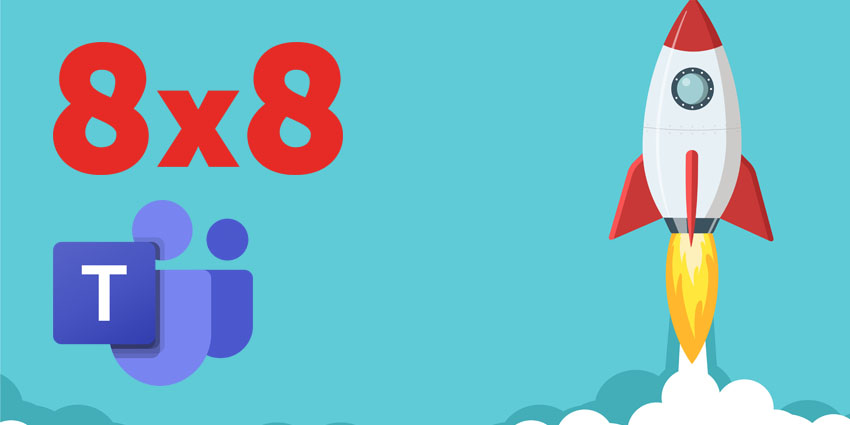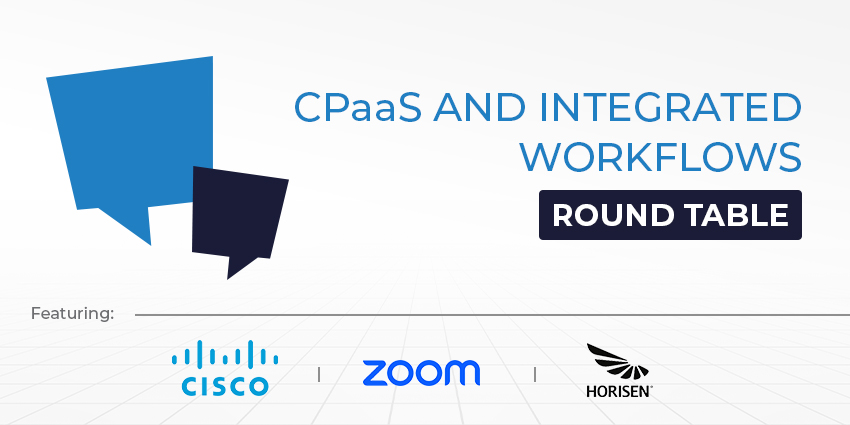Gartner has released its UCaaS Magic Quadrant 2022, which details the UCaaS market leaders.
Companies from all across the industry are after a place on the top right-hand corner of its ‘magic quadrant’.
As well as listing the biggest movers and shakers of UCaaS, it also lists notable challengers, visionaries, and niche players to look out for in the year ahead.
Changes from MQ 2021
Many of the UCaaS providers, and their positions, remain unchanged. The first two places have again been awarded to Microsoft and RingCentral, with Zoom and Cisco following.
Fuze has, of course, disappeared from the table following its acquisition by 8×8, who remain in fifth place, still within the leader’s quarter.
Replacing Fuze in the ‘visionaries’ section is Dialpad, which has shifted across from the bottom left ‘niche players’ quarter.
Mitel has disappeared from the quadrant after being listed as a ‘challenger’ last year, following its UCaaS partnership with RingCentral.
The rest of the quadrant remains the same, with Google and GoTo as challengers and Vonage, Sangoma, Windstream, and Wildix retaining their titles of niche players.

UCaaS Leaders
- Microsoft
- RingCentral
- Zoom
- Cisco
- 8×8
Microsoft
Microsoft has had a number of highlights this year, such as reaching 12 million Teams PSTN users, growing Office 365 seat numbers, and recently adding sign language view for Teams meetings and Teams games for work.
Gartner points to changes to the Microsoft Teams offering, including Microsoft Calling Plans expanding from 28 to 34 countries, Operator Connect expanding with 30 carriers in 63 countries, the preview launch of Operator Connect Mobile, enhancements to emergency calling, new SKUs like Teams Phone With Calling Plan, and more.
The key strengths of Microsoft Teams, according to Gartner, are its popularity, its ability to satisfy most organisations’ requirements, and its unified message, meet and call experience. Teams has also enhanced its voice availability SLA target from 99.9% to 99.99%.
Microsoft’s weaknesses, or ‘cautions’, are the uncertainty among organisations as to which is the best PSTN connectivity option for them. Microsoft Teams Phone System is often not considered sufficient to meet advanced telephony requirements, and large distributed organisations do not generally consider Microsoft’s telephony as reliable. Microsoft also does not currently offer a self-developed contact centre option for organisations using non-Microsoft CRM providers.
RingCentral
RingCentral recently announced major layoffs, although its quarterly results were still quite strong. The company has expanded geographically, through the deployment of its UC-CC platform in Australia, for example, and it has grown its product base too, with the likes of its AI video features. The company is currently at the centre of a rumour that it is interested in acquiring 8×8.
Gartner believes its geographic expansion is a key enhancement for the company this year, powered by its service and technology provider partnerships. These partnerships include multiple German telecom providers, as well as Mitel. Mitel brings with it a large channel and customer community that RingCentral has been able to leverage.
The strengths of RingCentral, according to Gartner, include strong integration and deployment ratings via third-party integrations and application resources for developers. It also provides access to the installed telephony user base through technology and service provider partnerships. The company differentiates its MVP solution with a mobile-first experience and delivers a consistently reliable service.
On the other hand, RingCentral places its energy into telephony, but buyers are increasingly valuing meetings, messaging, mobility, and customer experience ahead of this. The RingCentral Video solution is lagging behind comparable solutions from competitors. The change in leadership at RingCentral poses challenges to the creation of a cohesive company culture. Finally, RingCentral has only converted a small amount of its partners’ user bases, despite its numerous partnerships.
Zoom
Although Zoom’s latest quarterly results revealed a lowering of revenue expectations due to online business declining, that is not entirely reflective of the past year. Earlier this month, Zoom rivalled Google and Microsoft with the introduction of email and calendar services. The company also set $10bn revenue targets, which UC Today discussed with Zeus Kerravala, Founder and Principal Analyst at ZK Research.
Gartner provides a long list of Zoom highlights from the year, including an explosion of its user base; the launch of Zoom Whiteboard, Zoom App Marketplace, Zoom Contact, and Zoom Phone metred and unlimited plans in Japan; expansion of Zoom’s channel and device partners, and more.
The main strengths Gartner outlined relating to Zoom are its growth in its Zoom Phone user base, the advancement of its telephony features, the release of Zoom Contact Centre, and Zoom Phone offering full PSTN replacement in 46 countries with a bring-you-own carrier option.
On the flip side, Zoom Team Chat has fewer collaboration features than competitors, according to Gartner. Gartner clients usually select providers with a longer track record than Zoom. Delays were reported in implementation and account management. There are concerns that Zoom will hike up its prices when their renewal date is due.
Cisco
Webex by Cisco has also been making progress this year with the launch of a partner program, the release of new hybrid working solutions, and new partners, such as AT&T.
Gartner shone a light on Webex’s enhancements to Webex Calling Dedicated Instance, expansion to over 110 countries, Webex Go support and integrations, Webex Meetings layout customisations, AI meeting capabilities, close captioning and real-time translations for over 100 languages, and more.
The key strengths of Webex, according to Gartner, include its aggressive investment in innovation, its large and global partner ecosystem, the most complete UCaaS portfolio, and its acquisition of IMImobile in 2021.
On the downside, when customers use competing UC services, it detracts from its value proposition as Webex’s self-developed solution, covering IP phones, cameras, headsets, etc., is tightly integrated with the Cisco Webex Control Hub.
Buyers also perceive Webex’s UCaaS prices to be higher than leading competitors. The market does not yet perceive its Contact Centre to have proven itself within the industry yet, in spite of some positive steps forward.
A final word of caution for Webex is that many of its channel partners have taken up partnerships with Cisco’s competitors, including Microsoft, RingCentral, and Zoom.
8×8
8×8 seems to be growing ever stronger. Throughout the year, the company has been launching promising new products, like its no-code automation builder, forming partnerships with National Express, the London Borough of Hounslow, Swim England, and more. In July, 8×8 revealed it was aiming to 10X its Teams user numbers within the next two years. Its invention of the term ‘XCaaS’ (eXperience Communications as a Service), capturing its unified communications and contact centre offering, has taken root in the industry.
Gartner lists notable changes over the last 12 months at 8×8, such as the introduction of the 8×8 Frontdesk attendant console, the release of 8×8 Conversation IQ, a partnership with Genesys for Cloud CX contact centre customers, domestic calling in 13 countries, as well as enhancements to 8×8 Meet and 8×8 Voice for Microsoft Teams.
Gartner lists 8×8’s strengths as being a UCaaS vendor leader offering CCaaS capabilities and meeting advanced requirements of small and midsize contact centres. The company is well-positioned to serve organisations using Teams with UCaaS and CCaaS solutions. The acquisition of Fuze has expanded its geographic footprint and its customer base is balanced across all the market segments.
Weaknesses for 8×8 include mixed customer satisfaction experiences using 8×8’s admin portal during deployments. Gartner also observed that adoption of 8×8 took longer than anticipated due to the difference in desktop app and mobile user experience.
While 8×8 has advanced telephony capabilities, many Gartner clients prefer to use competing vendors for meetings and messaging. 8×8 is also generally not selected by large organisations looking for advanced contact centre features requiring advanced WFM (workforce management).
UCaaS Challengers
- GoTo
Google’s UCaaS offering consists of the Google Workspace applications Google meet, Google, Chat, and Google Voice.
Workspace highlights this year include Google meet Companion Mode, interoperability between Google Meet and Cisco Webex, free calling for Google Voice users in Europe, and the ability to convert Google Chat messages into spaces to access advanced collaboration features.
Gartner lists four key strengths shown by Google’s UCaaS offering, which include making Gmail the hub of work, adding Google Meet and Google Chat to every Workspace plan, improving Google editor and Google Meet integrations, and the company’s “Strong Positive” in financial health. Recently, however, Google laid off ten thousand workers due to the economic downturn ravaging the technology sector, using a controversial performance ranking algorithm.
Gartner’s cautions for Google include its availability SLA target for all Workspace services being lower than most UCaaS providers (99.9%). Google does not currently support Session Initiation Protocol (SIP) trunk connectivity, attendant consoles, overheard paging or E911 device tracking. Google Meet is behind leading vendors in terms of advanced meeting features and it does not offer an integrated out-of-the-box contact centre.
GoTo
GoTo’s UCaaS offering comes through its GoTo Connect service, which offers telephony, meeting, messaging, and contact centre.
Key changes within Goto’s UCaaS offering this year include the standardisation of GoTo Connect platform and GoTo Resolve. The company enabled further integrations across its applications and updated its administrative console. It released meeting collaboration and contact centre enhancements. In August, GoTo also unveiled its Essential Bundle.
GoTo’s strengths, according to Gartner, include its position to support hybrid and remote work through GoTo Connect and its remote access support tool, GoTo Resolve. GoTo has the highest adoption rate in Latin America, specifically in Mexico and Brazil. The company generally receives positive feedback, and its enhanced integrations enable an improved user experience.
However, GoTo’s full PSTN replacement capabilities are limited to 11 countries. Around 90% of GoTo’s UCaaS customer base comprises small organisations. Its meeting capabilities are not as extensive as some competitors, and its credit penalties for SLA target breaches are lower than the industry average.
Visionaries
Dialpad
Dialpad’s UCaaS offering is made up of Dialpad Talk and Dialpad Meeting. The company also has contact centre capabilities (Dialpad Ai Contact Center).
Changes in the last year include enhancements to Dialpad Meetings through added virtual backgrounds, real-time transcription, Miro whiteboard, and more. It has also made telephony developments in the form of a direct Microsoft Teams integrations and STIR/SHAKEN attestation. New virtual contact centre agent functionality has been added, enhanced digital engagement, and more.
Dialpad’s strengths, according to Gartner, are its deep partnership providing it with access to capital and global customers, its AI engine, which adds useful productivity enhancements, promoting 100% uptime SLAs across its UCaaS and CCaaS offerings, and its user interface has also received positive feedback.
Dialpad has limited visibility and brand recognition, however, compared to leading UCaaS providers. The functionality of Dialpad Meetings is behind competitors, it has limited availability of third-party resources, and there is not enough expertise to support very large multinational organisations.
Niche Players
- Vonage
- Sangoma
- Windstream
- Wildix
Vonage
Vonage Business Communications (VBC) is Vonage’s UCaaS offering, which provides telephony, SMS, messaging, and meetings.
Key changes this year include enhancements to Virtual Receptionist (IVR), automated integration with Microsoft Teams, and Vonage Meetings improvements, such as integrated whiteboard and improved scalability. Ericsson completed its acquisition of Vonage in July 2022.
Vonage’s strengths include its positive feedback from customers on service and support resolution. VBC is closely integrated with the Vonage Contact Center. The company’s microservices-based platform approach, coupled with its CPaaS capabilities, allows customers to integrate easily with business apps. Finally, VBC has positive customer ratings for its easy-to-use interface and admin portal.
Ericsson’s acquisition of Vonage, on the other hand, could be a distraction to workers and processes during integration. Vonage Meetings does not natively support automated transcription of language translation, polling, large events, or room integrations. The company has struggled to increase adoption or grow beyond the US, and customers noted feature limitations as a common concern.
Sangoma
Sangoma’s UCaaS offering consists of Sangoma Business Voice, which supports telephony, meetings, contact centre, SD-WAN, DaaS, SIP trunking, team messaging, chat, access control, and CPaaS capabilities.
This year, Sangoma acquired NetFortis, adding its offering and services to Sangoma’s portfolio. The company has made improvements to TeamHub, integrated the Star2Star UCaaS network, which it acquired in 2021, and released its P-series IP handsets.
Sangoma’s strengths, listed by Gartner, include its value-based pricing strategy, UCaaS suite and related offerings for midmarket customers, the acquisition of NetFortis, and its Integration Studio, which provides increased customisation and productivity for customers.
The acquisition of NetFortis so soon after the Star3Star acquisition may require additional management and attention. The company is unable to dedicate its R&D and support resources to UCaaS. It has a lower-than-average brand recognition with Gartner clients, and most large organisations prefer to use solutions with highly rated user experiences, such as Microsoft Teams and Zoom.
Windstream
Windstream’s OfficeSuite UC makes up its UCaaS offering with telephony, messaging, contact centre and mobility features.
Changes over the past year include the release of OfficeSuite Live, the launch of OfficeSuite Concierge Service, an omnichannel contact centre capability, expansion into ten new countries, an auto attendant cloning feature, and an administrative bulk update. In July, Windstream added Microsoft Teams to its UC solutions.
Gartner believes Windstream’s strengths include its bundles, being in control of its own roadmap through developing and operating the OfficeSuite platform, its positive customer feedback on account management and support, and WE Connect, which provides reporting, monitoring, admin, incident management, plus payments and invoicing.
The company has below-average recurring revenue for the UCaaS market, however. The company is limited to contracting customers within the US. It also has limited adoption among the midmarket and enterprise segments. Finally, Windstream’s mobile user experience does not have many collaboration features compared to leading UCaaS providers.
Wildix
Wildix’s UCaaS portfolio includes telephony, meetings, and conferencing via mobile and web. Its solutions consist of Wizyconf, Wizyconf Huddle-Room and Conference Room, Kits, and Wizywebinar.
Enhancements over the past year at Wildix include the meeting participant limit increasing from 50 to 100, its integration with Gong, and new operations in Switzerland. At the beginning of the year, Wildix said it was aiming to double down on its commitments to partners.
Wildix’s strengths, reported by Gartner, include its sales emphasis on native WebRTC support, integration with Teams, adding value to organisations requiring business analytics for sales and support, and using a 100% indirect and channel-based go-to-market approach.
The company’s revenue and headcount are the smallest of any provider in Gartner’s latest evaluation, however. Wildix’s roadmap for telephony and meetings trails the market and according to Gartner “lacks vision” compared to others. Its collaboration and conferencing capabilities are not currently pushing the boundaries like others brands featured, and it lacks market brand awareness with Gartner clients.







